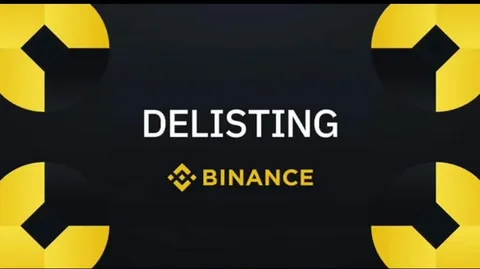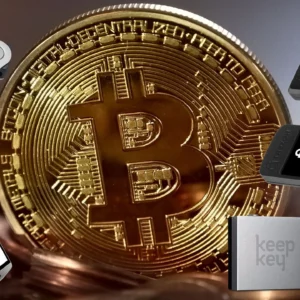Introduction
The cryptocurrency industry is undergoing a massive transformation as regulatory frameworks become more defined and stringent. One of the most significant recent developments in the European crypto landscape is Binance’s Strategic Move to delist nine Non-MiCA Stablecoins in Europe, including two of the most widely used stablecoins—USDT and DAI. This decision comes as Binance adapts to the European Union’s Markets in Crypto-Assets (MiCA) regulations, which are set to reshape the stablecoin market in the region.
While this move aligns with Binance’s commitment to regulatory compliance, it raises questions about the future of stablecoins in Europe, the impact on traders and investors, and how other exchanges might respond. In this blog post, we’ll explore why Binance made this decision, the implications for the crypto market, how it affects users, and what might come next for stablecoin regulation in Europe.

1. Understanding MiCA and Its Impact on Stablecoins
The Markets in Crypto-Assets (MiCA) regulation is the European Union’s comprehensive framework for governing digital assets, aimed at increasing transparency and consumer protection while minimizing financial risks. One of the critical aspects of MiCA is its strict approach to stablecoins, requiring issuers to meet high standards related to reserves, governance, and operational transparency.
MiCA distinguishes between different types of digital assets, categorizing them into asset-referenced tokens (ARTs) and e-money tokens (EMTs). To continue operating in Europe, stablecoins must comply with MiCA’s regulations by ensuring they are backed by sufficient reserves and managed by entities that meet strict legal requirements.
Binance’s recent action to delist nine Non-MiCA Stablecoins in Europe, including USDT and DAI, is a direct response to these new regulatory requirements. The exchange is proactively adapting to the framework before its enforcement, ensuring compliance and avoiding potential penalties. However, this decision could significantly impact market participants who rely on these stablecoins for trading and DeFi activities.
2. Why Binance is Delisting USDT, DAI, and Other Stablecoins
A Strategic Compliance Move
Binance’s decision to delist these stablecoins is not arbitrary—it is a calculated response to the upcoming MiCA regulations. While some stablecoins are already in the process of obtaining MiCA-compliant status, many do not yet meet the necessary criteria. Binance, as a leading exchange, cannot afford to risk non-compliance, which could lead to legal challenges, financial penalties, or operational restrictions in Europe.
Stablecoins Affected
Among the nine stablecoins being delisted, two of the most notable are USDT and DAI. USDT (Tether) is the largest stablecoin by market capitalization and is widely used for trading and payments, while DAI is a decentralized stablecoin issued by MakerDAO. Their removal from Binance in Europe will undoubtedly impact liquidity and trading strategies for European users.
The Timeline for Delisting
Binance has announced that it will gradually phase out these stablecoins for European users, with a clear roadmap to prevent market disruptions. Users are advised to convert their holdings into MiCA-compliant stablecoins or other assets before the delisting takes full effect.
Alternative Stablecoins Available
While Binance is delisting non-compliant stablecoins, it is expected to support MiCA-approved alternatives that meet the EU’s regulatory standards. This could mean an increased adoption of regulated euro-backed stablecoins or other newly compliant digital assets.
3. The Impact on European Crypto Traders and Investors
Reduced Stablecoin Choices for European Users
The removal of major stablecoins like USDT and DAI from Binance’s platform in Europe will limit options for traders and investors. Many users rely on stablecoins for liquidity, trading pairs, and decentralized finance (DeFi) applications. Without access to these assets, users may need to adjust their strategies or move to alternative platforms.
Potential Shift in Trading Volume and Market Liquidity
Since USDT and DAI are widely used for trading on Binance, their removal could impact liquidity on certain trading pairs. This may lead to:
- Increased trading costs due to wider bid-ask spreads
- Higher price volatility in certain crypto assets
- A migration of European users to other exchanges that still support these stablecoins
Challenges for the DeFi Ecosystem
The European DeFi market is also likely to face disruptions, as many protocols use USDT and DAI as core assets for lending, borrowing, and yield farming. Without these stablecoins, DeFi users in Europe may need to seek new stable assets or migrate to non-European platforms.
4. What’s Next for Stablecoins in Europe?
The Rise of MiCA-Compliant Stablecoins
With Binance leading the way in complying with MiCA, other exchanges are expected to follow suit. As a result, new MiCA-compliant stablecoins could gain traction in Europe. Some potential candidates include:
- Euro-backed stablecoins like EURC or EURe
- Fiat-backed stablecoins issued by European-regulated entities
- New stablecoin solutions launched by existing players seeking compliance
Will Other Exchanges Follow Binance’s Lead?
Given Binance’s influence in the global crypto market, other major exchanges operating in Europe may soon take similar actions. This could mean a broader shift away from Non-MiCA Stablecoins in Europe and a push toward compliant alternatives.
Regulatory Clarity Could Attract Institutional Investors
One of the benefits of MiCA is that it provides clear regulations for stablecoins, reducing uncertainty for institutional investors. While Binance’s move may initially disrupt the market, it could ultimately lead to greater institutional adoption of compliant stablecoins in Europe.
Conclusion
Binance’s Strategic Move to delist Non-MiCA Stablecoins in Europe, including USDT and DAI, marks a turning point for the European crypto market. While this decision is driven by the need to comply with MiCA regulations, it has significant implications for traders, investors, and the broader DeFi ecosystem.
The delisting of major stablecoins will undoubtedly create short-term challenges, such as reduced liquidity and limited choices for European users. However, it may also pave the way for the rise of MiCA-compliant stablecoins, offering a more regulated and secure environment for digital asset transactions.
As the crypto industry continues to evolve under new regulations, the question remains: How will users and exchanges adapt to this new stablecoin landscape? We’d love to hear your thoughts—leave a comment below and join the discussion!






